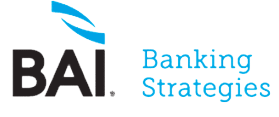No one knows who exactly first said, “if you can’t beat ’em, join ’em.”
So far as the finest minds on the subject can gather, the original phrasing was “if you can’t lick ’em, join ’em,” and it was first used in the 1940’s by anti-New Dealers who were beginning to understand that beating FDR was not in their immediate future. By the 1960’s, the phrase had taken the modern form we all know it to be —apparently permanently burned into the American consciousness by a series of advertisements for cigarettes.
However it came into popular use — it’s not a bad slogan for how 2016 has gone so far.
Sure, there have been some big outliers — the Brexit is not exactly a ringing endorsement of the concept of unity — but actually, on the whole, it’s been a good 12 months for joining up.
The biggest and most surprising change of direction on the “beating” vs “joining” question doubtlessly comes from the rapidly evolving world of online lending.
Until very recently, online banking was widely believed to be an unstoppable bank slayer. As recently as a year ago, alt lending CEOs were commonly touting as inevitable the ascension of online lenders over big and inefficient banks in regards to consumers and SMB lending.
These days the claims have gotten a bit less lofty, and victory focused — with a lot more founding CEOs sounding a bit like Fundation’s founder Sam Graziano, and touting their ability to cooperate rather than crush.
“Marketplace lending was going to change the state of banking, but that’s not really the case,” Graziano noted.
The banks, for a variety of reasons, aren’t going anywhere, which means a lot of lenders like Fundation are looking more into joining — and to connecting their lending platform to those banks customers.
But Fundation is unique in that unlike other lenders that still work to attract consumers to their own individualized offerings, Fundation is content to stay entirely in the background and work purely through their partners.
And while that approach is unusual in its segment, the SMB lending start-up obtained a $100 million asset-backed credit facility from Goldman Sachs that it plans to use to expand its capacity to extend credit to small businesses via strategic partnerships with banks. And, according to Graziano, it is a path that will likely become more common as the lending marketplace continues to evolve.
The Mounting Pressures To Be Good Cooperators Instead Of Competitors
Offering better credit scoring, faster decisions and more flexible platforms for borrowers, online lending managed to show up in one of the all-time most right places at the most right time. Consumers and small businesses needed access to credit, banks burned badly by the financial crisis weren’t offering it and various investors had no way to make any money because efforts to stimulate the economy left the interest rate at a less than inspiring zero.
Online lending, particularly its marketplace variant, solved a lot of problems at once and quickly attracted interest from all corners. By 2015 it seemed certain to many sober judges that lending was a business that technologists were going to slowly devour out from under the banks.
But a year can make a big difference, and the summer of 2016 is a very different place than the summer of 2015.
Today, investors have more options — less risky ones (more on that in a second) — and that has resulted in fewer marketplace loans getting bought.
Borrowers also have more options as credit has thawed for even sub-prime buyers.
Compounding matters, online lenders have suffered some severe reputational damage in 2016. Despite widely touted credit evaluation tools, various platforms have seen increases in default rates, in some cases at high enough rates to take a serious bite out investors’ bottom lines. That was already background noise when the Lending Club debacle unfolded — and left even a lot of online lending boosters wondering if perhaps the Wild West environment of tech-based lending had gotten a bit out of control.
And then, As Graziano notes, there is the other structural problem with the marketplace — it is way too popular a place to be.
“It’s saturated. Hundreds of platforms are going after the same pool of customers.”
So the choice was simple for Fundation: It could fight for a slice of the market that is static at best — shrinking at worst — with a massive number of competitors.
Or it could do something else.
Working Behind The Banks
Unsurprisingly, Fundation went with the option behind door number two.
“We decided to be an integrated partner of the banking system,” Graziano noted.
Similar to competitors in the space, Fundation offers loans to small businesses of $500K or less, with annual rates around 30 percent. Some of the loan is kept as a fee — but the profit center is loans held on its balance sheet from its own capital.
But Graziano describes Fundation as a “credit solutions provider” more than a lender — noting that the power of its offering is in the tools it offers around online applications and data-intensive credit algorithms to partners.
“It’s not a disintermediation story, but we can still help make more loans,” he said.
How Fundation — which eschews marketplace models for bank-partner lending — has grown is hard to measure since the firm declines to disclose lending volumes or revenues. But given billions loaned out by marketplace lenders last year, it can be safely assumed that Fundation has a lot of growing to do before it’s in the same category.
But Fundation is growing – now with credit facility from Goldman.
“We are excited to have garnered Goldman Sachs’ support. This transaction further strengthens our balance sheet and reinforces our unique position in the small business lending marketplace,” Graiziano noted.
His position is that Fundation is content to grow more slowly and steadily than the more explosive players in online lending.
Joining the banks might not be as exciting as beating them — but if it turns out to be less volatile and more broadly profitable, calm cooperation might just trump the competitive fireworks.
More News
Visa boasts of fintech Fast Track success
May 14, 2020
New York City Credit Program Aims to Help Female Entrepreneurs
November 14, 2019
Import/Export SMBs Introduced to Fintech Lending Options
August 7, 2019
Online Loans You Can Take To The Bank
April 23, 2019
Case study: Citizens Bank – fintech friendly
February 19, 2019
2018 Best of FinXTech Awards Finalists Announced
March 29, 2018
Citizens Digitizes SMB Lending Process With Fundation
November 6, 2017
Park Bank Announces Expansion of Small Business Lending Efforts
November 2, 2017
Defining, Adopting and Executing on Fintech
September 5, 2017
Fundation CEO Talks Partnership Strategy
August 4, 2017
Fundation works with, not in place of, banks
April 3, 2017
Fundation Secures Credit Facility from MidCap Financial
March 21, 2017
Where the money is: A small business lending gap
March 3, 2017
Q&A Break with Sam Graziano, CEO of Fundation
January 18, 2017
Fintech Ideas Festival Rapid Fire Emerging Tech Panel
January 17, 2017
Citizens Bank Next To Take The Leap With Alt-Lender
December 21, 2016
Regions Eyes Small Business Loans in Latest Tech Deal
September 22, 2016
Best Alternative Small Business Loans 2016
May 27, 2016
Frenemies In the Marketplace
April 29, 2016
Bigger Bang In Small Biz
April 1, 2016
How To Get A Small Business Loan (Webinar)
March 29, 2016
Fundation Expands Small Business Lending
March 4, 2016
Top 25 Financial Blogs for Small Businesses – 2016
February 22, 2016
CEO Sam Graziano on MSNBC’s Your Business
February 18, 2016
Bank Branches Are Still Good for at Least One Thing
February 17, 2016
Fundation Named Finalist In 2016 Stevie® Awards
February 12, 2016
A “Meaningful” Platform-Bank Partnership?
January 6, 2016
Late on a Loan Payment? How To Do Damage Control
October 21, 2015
Regions Inks Unique Deal to Tap Booming Fintech Industry
October 13, 2015
Best Alternative Small Business Loans – 2015
October 6, 2015
Fintech strikes again; Regions partners with start-up
October 5, 2015
Investing in Alternative Lending?
May 1, 2015















